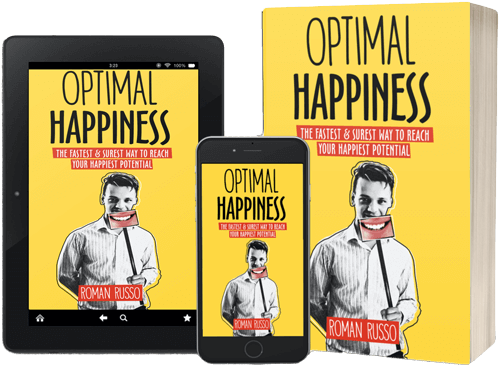
When I first heard of asceticism, it didn’t make sense to me. After all, asceticism is a voluntary and intentional act of inflicting pain and discomfort on oneself, whether that be physical or psychological. However, these negative experiences are done with the aim of positive gain, such as increased personal happiness, well-being, and freedom from suffering.
At times, asceticism can be confused with intentional self-harm done for the sake of negative self-punishment with no personal gain in mind. But this is exactly how we distinguish the two concepts, with asceticism being done with the benefit rather than the loss in mind.
But how does this make sense? Since when does pain, discomfort, and suffering lead to increased happiness and well-being? Isn’t it the other way around? Are asceticists misguided, or is there more to this practice than meets the eye?
After all, asceticism is rooted in a millennia-long practice found all over the world, present in virtually every culture and major religion worldwide. And while we may not always think of a certain practice as being ascetic, it is completely likely that we may already be practicing asceticism in our lives without necessarily calling our practices ascetic. This is also why it would be interesting to learn more about what asceticism really is, what other practices are considered ascetic, and why so many people see the value in practicing asceticism worldwide.
Examples of Ascetic Practices
Before we delve into why people are attracted to asceticism, let’s first look at a few examples of what it really is in practice. This may help us get a better understanding of what exactly we are talking about. There are simply too many different ways people intentionally or unintentionally create physical and psychological discomfort in their lives while practicing asceticism. Here are a few examples:
1. Fasting is one of the most common ascetic practices. It involves abstaining from food, water, and other drinks for a period of time, usually for health or religious reasons. Studies suggest that fasting exists virtually all over the world, and the temporary discomfort of refraining from eating contributes to better health, a greater appreciation for food, and spiritual purification.
2. Flagellation, or self-whipping, is especially prevalent in the context of religious self-punishment. It is best known in Christianity as a way of relieving the pain that Christ felt when he was whipped for our sins. A person practicing flagellation reframes their relationship with pain, giving it meaning and making it pleasant. Moreover, flagellation can make other forms of pain less imposing, as handling self-whipping makes less intense pain easier to bear.
3. Celibacy is another common asceticism practice. It involves abstaining from any and all sexual activities, either for a short or long period of time, which can go on for a person’s lifetime, often done for religious or spiritual reasons. Celibacy can take many forms, such as avoiding physical contact, kissing, flirting, speaking, making eye contact, or even being around the opposite gender or anyone a person finds attractive.
4. Nail bed sitting or lying is a traditional Indian way of practicing asceticism. A person sits or lies down on a bed full of nails that poke directly into their skin, creating a lot of physical discomfort. However, on a psychological level, a person can even experience relaxation, as the nails can help relax tense muscles. It is a larger-scale version of acupuncture, targeting global relaxation in a specific area of the body. Today, a more manageable form of nail bed practice is used with what is known as an acupuncture mat.
5. Minimalism is a tool that people use in the modern world to create happiness through counterintuitive discomfort. It involves living with less and simplifying one’s life – physically, digitally, and emotionally. By decluttering and getting rid of unnecessary possessions, a person can make room for what truly matters and find more joy in less.
6. Cold showers is a practice popularized by Wim Hof, who teaches his students to embrace the shock and discomfort that comes with being in cold water. At the same time, Hof claims that there are numerous ascetic and scientifically proven benefits to this practice, such as improved health, longevity, and higher life satisfaction.
7. Yoga, gym and otherwise sports are perhaps the most acceptable ways we practice asceticism without necessarily thinking of them as such. We put our bodies through physical stress, often requiring recovery time, but we also reap benefits such as social interactions and physical health. Although these activities can be uncomfortable and even dangerous if not done properly, most people find long-term benefits outweigh the short-term discomfort.
8. Meditation often involves sitting in a certain posture and not doing or thinking about anything specific. While this is an oversimplification, many people find meditation to be physically and psychologically demanding and even painful. It creates discomfort, a perception of wasted time, and unclear benefits, especially for beginners.
Dangers of Self-Harm
As mentioned before, we should not confuse asceticism with self-harm, as they have different intentions and outcomes. Asceticism is the practice of using pain and discomfort to achieve physical, spiritual, or other benefits in life. It involves rewiring one’s relationship with pain to ultimately experience less pain overall.
On the other hand, self-harm is often done as a form of self-punishment or as a way to escape from negative emotions. It can be done through cutting, punching, burning, or other forms of physical or psychological harm to oneself. Self-harm is a dangerous method of self-expression that can lead to long-term consequences and regret. It is recommended to seek professional help when experiencing intense negative feelings and thoughts of self-harm, which is available on this blog or online.
However, it is important to note that asceticism can also be dangerous if taken to an extreme. It is recommended to approach ascetic practices with caution, especially for beginners or under supervision.
At the same time, we shouldn’t necessarily shy away from asceticism in all of its forms, as certain practices like minimalism, celibacy, and fasting are relatively harmless and they provide benefits especially when done in a controlled environment.
Benefits of Asceticism

At this point, we have already hinted at many advantages and benefits of ascetic practice, but now let’s explicitly outline these benefits:
1. Reduce overstimulation: In our modern society, ongoing overstimulation is often seen as the ultimate path to happiness. As a result, people frequently engage in overeating, drinking, purchasing unnecessary items (retail therapy), smoking, taking drugs, and engaging in promiscuous behavior because they believe they need these stimuli to feel happy.
However, when this high level of stimulation is absent or decreases, individuals may feel as though something is lacking in their lives. They may believe that they are not living life to the fullest, leading to unhappiness and a continuous desire to maintain high levels of stimulation. This cycle of overstimulation ultimately leads to unhappiness, as it is both impractical and often impossible to sustain a high level of stimulation indefinitely. Despite this, many individuals still attempt to do so, resulting in emotional exhaustion and an unsustainable lifestyle.
Asceticism offers an alternative perspective by helping individuals find contentment with relatively low levels of stimulation. By embracing simplicity and not feeling the need to constantly pursue extraordinary experiences, ascetics can find happiness and satisfaction regardless of the amount of activity in their lives.
2. Creating a new relationship with pain: Asceticism teaches individuals to be comfortable with certain levels of pain and discomfort, which in turn makes other forms of pain less significant. For example, if breaking a favorite tea cup would have previously caused great distress, an ascetic mindset allows for the ability to replace it without dwelling too much on the loss.
3. Happiness and higher life satisfaction: The act of depriving ourselves (e.g., food or drinks) sends a message to our brain stating that we are able and willing to endure discomfort for the sake of a greater good. This can lead to a feeling of resilience and contentment, regardless of external circumstances, ultimately increasing feelings of happiness and life satisfaction.
4. Spiritual benefits: Many people report becoming more spiritually attuned by practicing asceticism. By denying themselves worldly pleasures, they are able to better focus on their internal spiritual lives. This is probably why asceticism can be found in virtually every culture and religion worldwide throughout history.
5. Knowing ourselves and our limits: Lastly, I personally realized that I may not know myself as well as I thought. For example, I have discovered that I am unaware of my own limits, and practicing asceticism has helped me to better understand what I am capable of. One way in which I have challenged myself is through regular meditation. This involves sitting still for hours, despite any discomfort or pain that may arise.
However, I recently learned that my meditation sessions are considered quite “light” compared to those of more advanced practitioners. In a Japanese retreat, participants are required to maintain the same posture for days without moving a muscle. Failure to do so results in expulsion from the retreat. Undoubtedly, many people experience significant pain and discomfort due to these strict requirements, leading them to drop out.
However, the leaders of the retreat understand that their demand is not impossible, as many individuals are able to successfully complete this challenging practice. In fact, these individuals often report feeling a great sense of happiness and accomplishment after completing the difficult task.
Role of Asceticism in Christianity
I guess when we think of asceticism, we mostly imagine a practice that is done in the East, such as in India, specifically in yoga. However, as it has been stated before, asceticism is a worldwide phenomenon, and therefore we can find it in virtually every culture and religion. I guess the only reason we think of asceticism and practice in yoga is because they are the ones that gave this practice a name, connecting many seemingly disconnected concepts under one umbrella.
However, in the West, asceticism is especially present in Christianity, such as in the already mentioned fasting and self-whipping. However, I’d say that perhaps its effects can be felt on a much deeper level. This is because asceticism is the central theme of Christianity, even if we don’t naturally think of it in this nature.
It is connected to the original sin for which people have to atone virtually all their lives. Christianity further portrays the role of atonement, the seven deadly sins, the desire to escape from hell, and reach heaven by living our lives in a specific way.
As such, a message of salvation is an ever-present core of Christian religions. As God is all-loving and all-forgiving, we are also told to perform certain ascetic sacrifices to reach heaven. And this makes complete sense from the perspective of asceticism, as one of the fastest ways to achieve personal transformation is by putting ourselves in uncomfortable situations, which ultimately will provide us with many benefits.
Buddha and Asceticism
And the best-known ascetic in the world is Buddha. For many years, he practiced asceticism at a very deep level as one of his first steps towards enlightenment. Buddha went to great lengths in his ascetic practices, sometimes eating only a handful of peas each day, repeatedly holding his breath to the brink of passing out, inflicting pain on his body in various ways, staying awake for extended periods of time, and trying almost anything he could think of.
After several years, however, he concluded that asceticism alone would not be enough to achieve the level of results he was seeking and so to the astonishment of others in the Indian ascetic community, Buddha left this community to pursue a more moderate approach. He realized that while there are clear benefits to ascetic practices, the body must be cared for enough, so an individual can be healthy and focused enough to pursue goals one wishes to achieve.
Buddha’s teachings called for a middle way approach, where one practices asceticism and benefits from its lessons and benefits, but also maintains the ability to function and reach higher goals.














